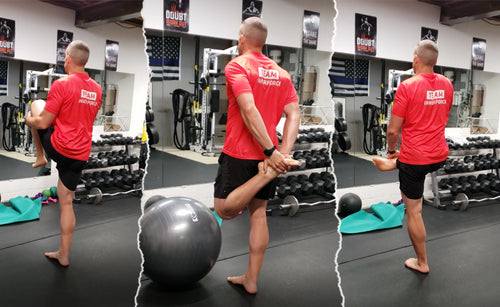The Perfect Balance: Crafting a Comprehensive Triathlon Training Plan

The Importance of a Balanced Training Plan

A well-rounded training plan is essential for triathlon success. In this blog post, we'll guide you through the process of creating a balanced and effective training plan, focusing on optimizing performance in each discipline while minimizing the risk of injury.
Assessing Your Current Fitness Level
Before diving into your training plan, assess your current fitness level. This can be done through self-evaluation, fitness tests, or consultation with a coach. Knowing your starting point will help you set realistic goals and tailor your plan accordingly.
Setting Realistic Goals
Establish achievable and measurable goals for your triathlon journey. Whether you're aiming for a personal best or completing your first race, setting realistic goals will keep you motivated and focused.
Training Periodization
Periodization is the process of dividing your training plan into distinct phases or cycles. These include macrocycles (season-long or annual plans), mesocycles (3-6 week blocks), and microcycles (weekly plans). Structuring your plan around these cycles will ensure that you progressively build fitness while allowing for recovery.
Balancing Swim, Bike, and Run Training

To excel in a triathlon, you need to train effectively in all three disciplines. Allocate time and intensity for each sport, and balance your training plan to avoid overemphasis on one discipline at the expense of others.
Importance of Rest and Recovery
Rest and recovery are crucial components of any training plan. Schedule rest days and recovery workouts to prevent overtraining, reduce the risk of injury, and allow your body to adapt to the training stimulus.
Incorporating Strength and Flexibility Training
Strength and flexibility training are essential for improving performance and preventing injury. Include exercises targeting key muscle groups and stretching routines to enhance your overall triathlon fitness.
Monitoring Progress and Adjusting Your Plan
Track your workouts and performance to monitor progress and make adjustments to your plan as needed. Use feedback from your body, coaches, or training partners to fine-tune your approach and ensure consistent improvement.
Stay Consistent and Enjoy the Journey

Creating a balanced and comprehensive training plan is key to achieving your triathlon goals. Stay consistent, listen to your body, and enjoy the journey toward peak performance in your next race.
Photos. @jefflisea - @tadspencer42

The Importance of a Balanced Training Plan

A well-rounded training plan is essential for triathlon success. In this blog post, we'll guide you through the process of creating a balanced and effective training plan, focusing on optimizing performance in each discipline while minimizing the risk of injury.
Assessing Your Current Fitness Level
Before diving into your training plan, assess your current fitness level. This can be done through self-evaluation, fitness tests, or consultation with a coach. Knowing your starting point will help you set realistic goals and tailor your plan accordingly.
Setting Realistic Goals
Establish achievable and measurable goals for your triathlon journey. Whether you're aiming for a personal best or completing your first race, setting realistic goals will keep you motivated and focused.
Training Periodization
Periodization is the process of dividing your training plan into distinct phases or cycles. These include macrocycles (season-long or annual plans), mesocycles (3-6 week blocks), and microcycles (weekly plans). Structuring your plan around these cycles will ensure that you progressively build fitness while allowing for recovery.
Balancing Swim, Bike, and Run Training

To excel in a triathlon, you need to train effectively in all three disciplines. Allocate time and intensity for each sport, and balance your training plan to avoid overemphasis on one discipline at the expense of others.
Importance of Rest and Recovery
Rest and recovery are crucial components of any training plan. Schedule rest days and recovery workouts to prevent overtraining, reduce the risk of injury, and allow your body to adapt to the training stimulus.
Incorporating Strength and Flexibility Training
Strength and flexibility training are essential for improving performance and preventing injury. Include exercises targeting key muscle groups and stretching routines to enhance your overall triathlon fitness.
Monitoring Progress and Adjusting Your Plan
Track your workouts and performance to monitor progress and make adjustments to your plan as needed. Use feedback from your body, coaches, or training partners to fine-tune your approach and ensure consistent improvement.
Stay Consistent and Enjoy the Journey

Creating a balanced and comprehensive training plan is key to achieving your triathlon goals. Stay consistent, listen to your body, and enjoy the journey toward peak performance in your next race.
Photos. @jefflisea - @tadspencer42
SEE WHAT CUSTOM APPAREL LOOKS LIKE

GEAR UP
MORE FROM THE BLOG

6 WARMUP EXERCISES EVERY TRIATHLETE NEEDS TO TRY BEFORE A TRAINING SESSION
@gym_thome (Instagram) Although training is vital, a proper warmup routine will help to avoid injury and improve performance ...

5 Tips To Prepare For Race Day From Professional Triathletes
@ironman_doug (Instagram) @justinluau (Photographer) Sometimes all you need is a little kick in the butt from someone...

Why Triathletes Should Train In Zone 2
@fryecameron (Instagram) Zone 2 training may not be as satisfying as a grueling interval session, but it’s essential...

Our 1st mental health capsule in partnership with the American Foundation for Suicide Prevention
May is Mental Health Awareness Month and a month to put front and center the amazing work that the AFSP...



